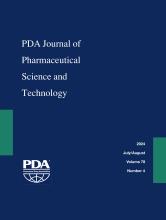Abstract
There is a significant opportunity to expand the understanding of subcutaneous injection mechanics with an aim to increase injectable volume while controlling tissue strain and associated subject pain. Computational modeling can evaluate the mechanics of subcutaneous injections as a supplement to experimental, animal and clinical studies. The objectives of this study are to (1) develop a computational model for subcutaneous injection in tissue, (2) investigate the influence anisotropic tissue permeability has on bolus formation, and (3) explore the effects that injection flow rate and viscosity have on injection flow and tissue strain. Poroelastic models with subsurface flow were implemented in finite element software (COMSOL, ABAQUS). Pore pressure and injectate distribution showed excellent agreement with experimental results when evaluated at multiple injection rates (20 ml/hr, 120 ml/hr and 360 ml/hr). Including the anisotropy of tissue permeability causes the injectate to preferentially spread horizontally, similar to experimentally observed bolus distributions. Cases are presented to provide additional insight into injection mechanics, including variations on the delivery rate, the injection volume, viscosity and the thickness of the subcutaneous layer. The results support the use of computational modeling as a valid tool for understanding tissue strains and injectate distributions for large volume injections.
- © PDA, Inc. 2024
PDA members receive access to all articles published in the current year and previous volume year. Institutional subscribers received access to all content. Log in below to receive access to this article if you are either of these.
If you are neither or you are a PDA member trying to access an article outside of your membership license, then you must purchase access to this article (below). If you do not have a username or password for JPST, you will be required to create an account prior to purchasing.
Full issue PDFs are for PDA members only.
Note to pda.org users
The PDA and PDA bookstore websites (www.pda.org and www.pda.org/bookstore) are separate websites from the PDA JPST website. When you first join PDA, your initial UserID and Password are sent to HighWirePress to create your PDA JPST account. Subsequent UserrID and Password changes required at the PDA websites will not pass on to PDA JPST and vice versa. If you forget your PDA JPST UserID and/or Password, you can request help to retrieve UserID and reset Password below.






